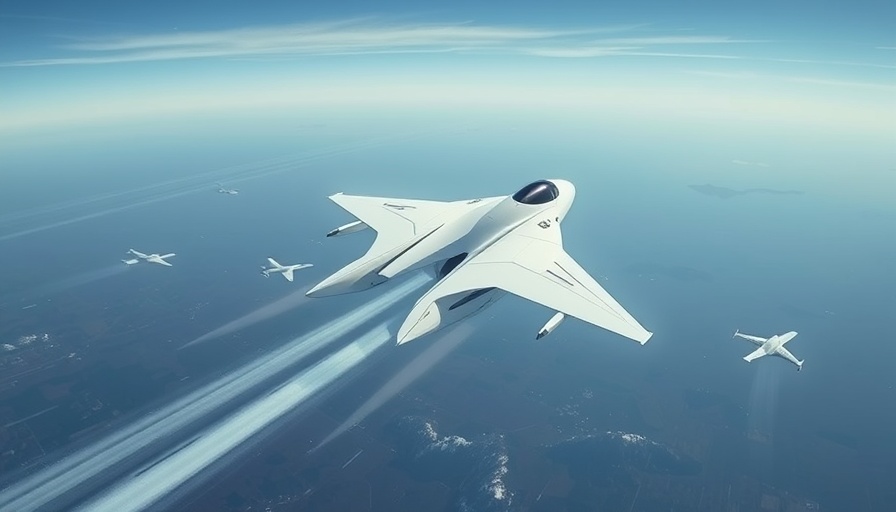
A Leap Towards Hypersonic Travel: Venus Aerospace's Innovation
Venus Aerospace just achieved a groundbreaking milestone that may redefine the future of aviation. The Houston-based startup successfully completed the first U.S. flight test of its innovative hypersonic engine, the Rotating Detonation Rocket Engine (RDRE). This means that we might soon be able to travel four to nine times the speed of sound, making previously long flights incredibly swift. Imagine flying from Los Angeles to Tokyo in under two hours—a journey that could change how we perceive distance and time.
Understanding Hypersonic Speed: The Next Frontier
Hypersonic travel, defined as speeds greater than five times the speed of sound, represents a significant leap from the conventional capabilities of our current aviation technologies. The RDRE has the potential to make air travel far more efficient and economical, significantly reminiscent of the once-revolutionary jet engines. In the context of available technology and innovation, this new system could reshape global connectivity much like the introduction of jet travel did in the past.
The Impact of Hypersonic Travel on Society
As Sassie Duggleby, CEO and co-founder of Venus Aerospace highlights, advancements in connectivity historically lead to increased peace and prosperity. Faster travel could alter the dynamics of business, enabling instant personal interactions that foster economic collaboration and cultural exchange. In an increasingly globalized world, the consequences of rapid transit go beyond mere time savings; they may redefine global business strategies, tourism, and even geopolitics.
Funding and Future Plans: What Lies Ahead for Venus Aerospace
Fresh on the heels of its successful test flight, Venus Aerospace is gearing up to raise a series B funding round to propel its technology forward. Competing in the aerospace sector is formidable, yet this company is strategically positioned in a burgeoning market for high-speed travel, aiming for initial flights in the 2030s. With thoughtful investments and partnerships, Venus can potentially lead the charge in this revolutionary sector.
Common Misconceptions: Hypersonic Reality vs. Fantasy
Among those skeptical about hypersonic travel, myths abound; primarily, that it remains a distant dream or is too dangerous and technologically elusive. However, Venus Aerospace's progress illustrates that it is not merely the stuff of science fiction. With successful test flights and a functioning prototype, the dream of near-instantaneous travel is closer to reality than many realize.
The Role of Technological Innovation in Travel Evolution
As we stand on the brink of hypersonic travel, one must consider the broader implications of such innovation. Each advancement in travel technology—from trains to jets—has garnered significant shifts in how society functions. Higher speeds can bring about changes in labor mobility, accessibility to remote locations, and social interactions on previously unimaginable scales. Therefore, understanding hypersonic technology is not just about engineering; it's about envisioning a transformed world.
Conclusion: Are We Ready for the Future of Flight?
As we contemplate the dawn of hypersonic travel, we must ask ourselves if we are prepared. The implications extend from the technological breakthroughs at Venus Aerospace to the everyday lives of people around the globe. The shift to such travel could lead to a widespread rethinking of business operations, tourism, and even family connections. To navigate this new world smoothly, we must remain informed and engaged with the possibilities and challenges posed by this and similar innovations.
 Add Row
Add Row  Add
Add 




Write A Comment